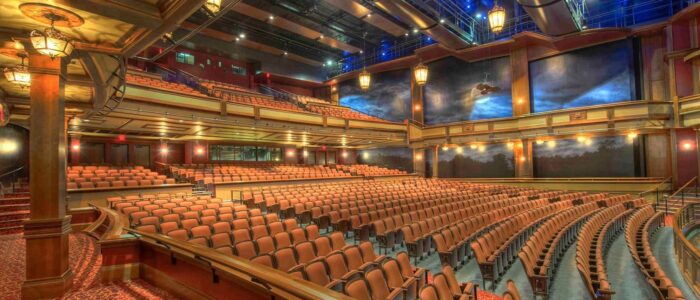Tag Archives: D6
- Home
- Posts tagged "D6" (Page 2)

Breakfast Table Trilogy
Red Lion Cafe | College Avenue | Financial Position 2024 | $2.914B
Institutional Planning & Operations
Proud of who we are and excited for our future. We’re thrilled to welcome our newest Scarlet Knights! #upstreamredteam
.
.
.
.#NationalSigningDay #NSD #ScarletKnights #RutgersRowing #ncaarowing #bigtenrowing #bigten pic.twitter.com/CyXhRdpEV7— RutgersWomensRowing (@RutgersWRowing) November 14, 2024
Watch & Night Operations
(Night’s Rest) from the Times of Day series. (1889) Alphonse Mucha (1860-1939) pic.twitter.com/FWv0zVmRqN
— Filipe Floyd (@FloydFilipe) September 12, 2023
Potato Latkes & Sufganiyot
Financial Position $1.417B (Page 16) | Campus Master Plan 2025-2035 | Revenue Bonds
Traditional Hanukkah foods (Spoon University) are often fried or cooked in oil, symbolizing the miracle of the oil that lasted eight days in the rededication of the Second Temple in Jerusalem.
Latkes (Potato Pancakes): Grated potatoes mixed with onions, eggs, and flour, then fried until crispy. They are often served with applesauce or sour cream.
Sufganiyot (Jelly-filled Doughnuts): Deep-fried doughnuts filled with jelly or custard and dusted with powdered sugar. They represent the oil that miraculously burned for eight days.
Brisket: Slow-cooked beef brisket is a popular main course for Hanukkah dinners.
Applesauce: Often served as a topping for latkes or as a side dish.
Matzo Ball Soup: While traditionally associated with Passover, some families also serve matzo ball soup during Hanukkah. It consists of light, fluffy dumplings made from matzo meal in a chicken broth.
Kugel: A baked casserole dish that can be sweet or savory, made with noodles, potatoes, or other ingredients.
Chocolate Gelt: Chocolate coins wrapped in gold or silver foil, often used in the game of dreidel.
Dreidel Cookies: Cookies shaped like the spinning top used in the traditional Hanukkah game of dreidel.
Cheese: In reference to the story of Judith, who is said to have fed cheese to an enemy general to make him thirsty and then gave him wine to make him drunk.
time to lock in, Knights 🔒
Good luck on finals! 🫶 pic.twitter.com/RdAT9Ug2e0
— UCF (@UCF) December 2, 2024
Home Economics
Today at the usual hour we review the standards, codes, regulations and best practice literature for the safety and sustainability of facilities for teaching skills needed for supporting families.
You could hear a pin drop in this room 📌 So focused practicing for their exam 🧑🏻🍳 pic.twitter.com/lHw20avgnL
— Miss Dunne (@MissDunne1042) December 3, 2024
Fish and Chips and the British Working Class

“Fish and Chips” | Fred Laidler (1918–1988)
Fish and Chips and the British Working Class, 1870-1930
“Fish and chips was in many ways the pioneer fast-food industry. It became an essential component of working-class diet and popular culture in parts of London, and over wide areas of industrial midland and northern England and southern Scotland, in the early decades of the twentieth century…I propose to argue that the fish and chip trade was not only important enough in itself to justify sustained historical analysis, but also that it provides a useful vantage point for examining important changes in British society more generally.”
— John Walken, 1998, Journal of Social History
In England I’m in a very international community. I’m meeting students attempting to learn English, they are from all over the world. Many have never heard of Jesus, some have heard the name and nothing more. It’s amazing, a kind smile and warm conversation is a perfect pretext… pic.twitter.com/jLiDAc8nlU
— Riley Nuttall (@nuttallriley1) July 11, 2025
What Is A Standard Drink?
“It’s a fine line between Saturday night
and Sunday morning” – Jimmy Buffett
“Rather a bottle in front of me
than a frontal lobotomy” — Some guy
Many people are surprised to learn what counts as a “drink”. The amount of liquid in your glass, can, or bottle does not necessarily match up to how much alcohol is actually in your drink. Even before the United States federal government withdrew from regulating alcohol, the conversation, and degree of agreement and attitude, remains remarkably regionally specific:
Missouri University of Science & Technology: What is a Standard Drink?
University of South Alabama: What is a Standard Drink?
Stanford University Office of Alcohol Policy and Education
Other nations serve alcohol to students on campus in university owned facilities.
I didn’t know that🤔 pic.twitter.com/rMT3X2fCN0
— Alix (@AlixG_2) August 17, 2024
For anyone who cares.. I have 2866 DAYS of sobriety ❤️ pic.twitter.com/PBKAle2m4c
— 🎀 Sᴀʀᴀʜ 🎨 Aʀᴛɪsᴛ 🎀 (@SarahXArt) December 30, 2025
— Dr. Maya C. Popa (@MayaCPopa) May 26, 2023
Casual reminder that Wisconsin has more bars than grocery stores pic.twitter.com/dG8YYRkoKd
— Midwest vs. Everybody (@midwestern_ope) March 30, 2025
not sure if anyone cares on here, but I’ve been sober 1 year today❤️🩹 pic.twitter.com/q33BaYPXPx
— Sophia Chloe 🇱🇷🇬🇧 (@_Hani_945) December 27, 2025
Standard Reference Material
Metrology is the scientific discipline that deals with measurement, including both the theoretical and practical aspects of measurement. It is a broad field that encompasses many different areas, including length, mass, time, temperature, and electrical and optical measurements. The goal of metrology is to establish a system of measurement that is accurate, reliable, and consistent. This involves the development of standards and calibration methods that enable precise and traceable measurements to be made.
The International System of Units is the most widely used system of units today and is based on a set of seven base units, which are defined in terms of physical constants or other fundamental quantities. Another important aspect of metrology is the development and use of measurement instruments and techniques. These instruments and techniques must be designed to minimize errors and uncertainties in measurements, and they must be calibrated against recognized standards to ensure accuracy and traceability.
Metrology also involves the development of statistical methods for analyzing and interpreting measurement data. These methods are used to quantify the uncertainty associated with measurement results and to determine the reliability of those results.
Theater Safety
“ I think that the theater is the initial glamorizer of thought; where it can be told – without too much disguise but without too much directness either – the secrets, and thereby its antipathies and sympathies – the secrets and the knowledge of the human heart…
…I think that makes the art of the theater as important as the doctor or the psychologist or the Minister…
…I think it’s vitally important that the world knows itself and I think the theater is one of the most immediate means of expression towards that end…”
Demand for live events in college towns — what is now called “entertainment content” — is gathering pace; owed somewhat to an older demographic that prefers expanded social interaction to the online entertainment offerings that the younger demographic prefers*. We see an expansion of the market in the construction of architecturally astonishing buildings; though the circumstances of pandemic has changed everything.
Today our interest lies in the complex safety and sustainability characteristics of the physical infrastructure — with particular interest in the fire protection, environmental air and electrotechnologies required to make them safe and sustainable. This facility class is far more complicated technologically and operates at significantly higher risk than, say, classrooms or office space.











The Entertainment Services and Technology Association is one of the first names in trade associations that support the ‘business of show business’ through networking, safe practices, education, and representation. We follow the standards making activity of its technical committees and monitor public commenting opportunities. ESTA releases markups of its consensus products for public comment at a fairly brisk pace on its standards development landing page:
Transcripts of related standards:
2026 National Electrical Code Public Input Report CMP-15
2026 National Electrical Code Second Draft Report CMP-15
You may obtain an electronic copy at the link above, along with a comment form. Send your comments to Karl Ruling, (212) 244-1505, standards@esta.org with an optional copy to psa@ansi.org). We encourage our colleagues in school districts and in colleges and universities large and small; with responsibilities for the safety and sustainability of cultural resource properties, media centers, performance venues to participate in the ESTA technical standards development program.
We keep the ESTA suite on the standing agenda of our Lively Arts colloquia; open to everyone. See our CALENDAR for the next online meeting.
Since the electrotechnologies for the lively arts have evolved into complex, interoperable systems we also collaborate with the IEEE Education & Healthcare Facilities Committee on technical specifics. That committee meets online four times per month in European and American time zones.
“We’re all actors: We all play different roles in different situations.”
Marlon Brando
Issue: [Various]
Category: Electrical, Infotech, Lively Arts,
Colleagues: Mike Anthony, Christine Fischer, Mike Hiler, Nehad El-Sherif
*More >>
State Capitals And College Towns: A Recipe For Success
Baby Boomers Are Retiring to College Towns
The original University of Michigan codes and standards advocacy enterprise interviewed an ESTA affiliate in 2015:
New update alert! The 2022 update to the Trademark Assignment Dataset is now available online. Find 1.29 million trademark assignments, involving 2.28 million unique trademark properties issued by the USPTO between March 1952 and January 2023: https://t.co/njrDAbSpwB pic.twitter.com/GkAXrHoQ9T
— USPTO (@uspto) July 13, 2023
Standards Michigan Group, LLC
2723 South State Street | Suite 150
Ann Arbor, MI 48104 USA
888-746-3670
























